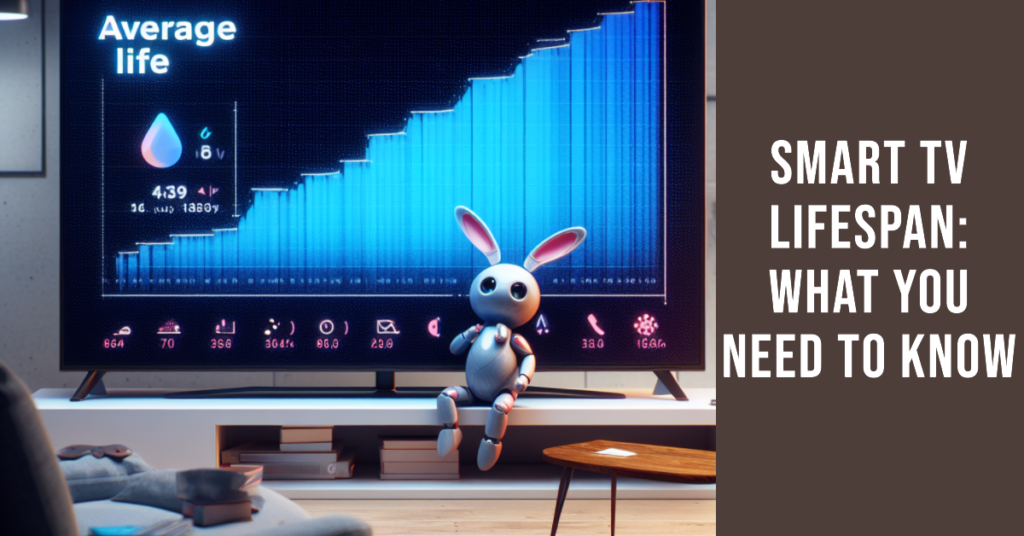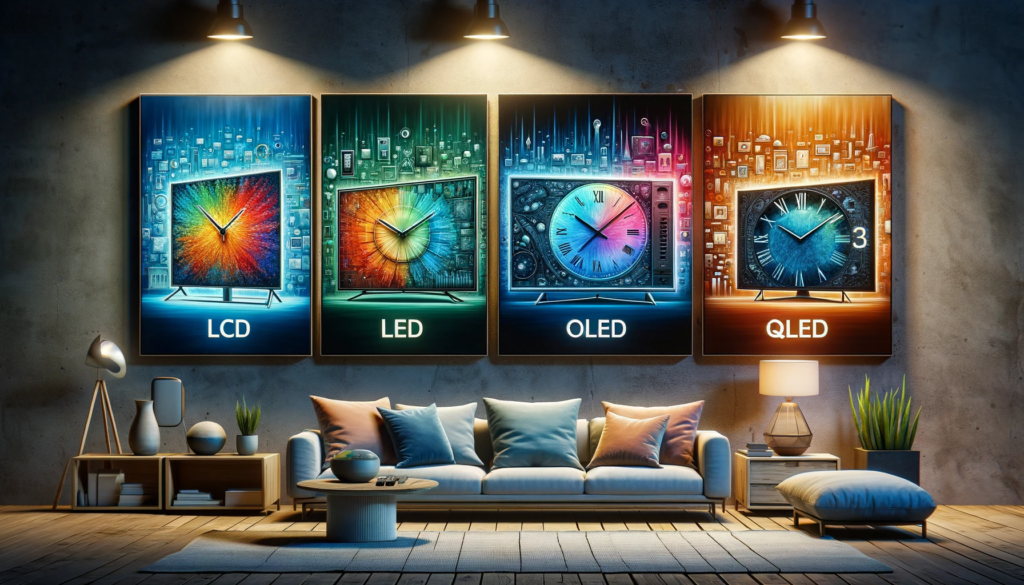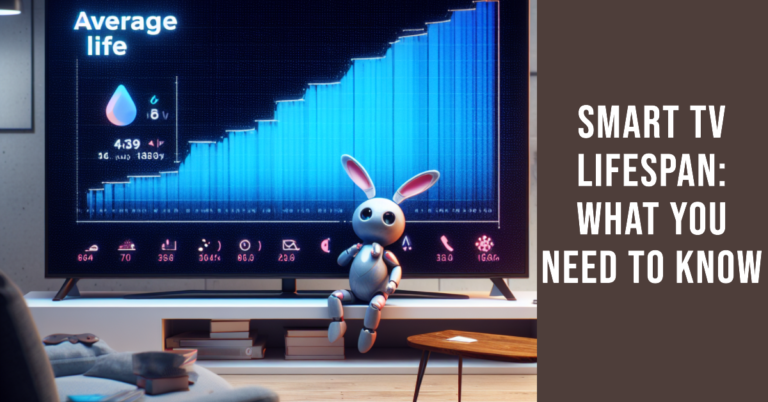Introduction to Average Life of a Smart tV
The average life of a smart TV is a topic often overlooked, yet it plays a key role in consumers' purchasing decisions. In this digital era, where smart TVs have significantly changed the viewing experience by offering internet connectivity, app services, and streamlined interfaces, understanding the lifespan of a smart TV has become more crucial. Contrary to the conventional televisions that were built to last nearly a decade or more, smart TVs, with their intricate technology and advanced features, may have different durability.

Estimated Lifespan Range
In discussing the longevity of smart TVs, a significant question comes up — what is the average life of a smart TV? A range can be estimated based on experts' opinions and manufacturers' claims. Most suggest that the average life expectancy of a smart TV rests around 5 to 7 years under what's considered 'normal' use. This duration, however, is not definitive. It can be shorter or more prolonged depending on a host of factors, including the model, quality, usage, and overall maintenance.
The mentioned range of smart TV longevity is crucial to remember, especially when considering the oft-high price tags attached to these devices. It's a good indicator of how much use one can expect to get out of their investment. However, the average life of a smart TV is a somewhat fluctuating number, subject to the specific type of TV, the brand, and even the year it was made. Consumer technology changes rapidly, set to affect the average life of smart TVs as time progresses. Understanding this can help buyers make more informed purchase decisions.
Impact of Panel Type on Lifespan
The type of panel utilized in Smart TVs plays a significant role in their durability. Different panel types - such as LED, LCD, OLED, and QLED - exhibit different lifespan ranges. The average life of a smart TV varies depending on the panel type. Predominantly, LCD and LED TVs have been noted for their longevity, typically offering many years of use if appropriately maintained.
Smart TV Types, Resolutions, and Watch Hours
| Type of TV | Resolution | Watch Hours (Estimate) |
|---|---|---|
| LCD TV | Up to 4K | About 60,000 hours |
| LED TV | Up to 4K | 40,000 to 60,000 hours |
| OLED TV | 4K and 8K | About 30,000 hours |
| QLED TV | 4K and 8K | Not specifically stated, but generally longer than LED TVs |
However, understanding the lifespan of LED and LCD TVs is vital. Generally, the lifespan of an LED TV is longer than that of an LCD, due not only to the efficiency of the components used but also to the light system utilized, which can impact the average life of a smart TV. To summarize, the kind of panel a smart TV employs has a direct influence on its durability, and as such, should be a crucial consideration for anyone looking to purchase a new set.

Usage Patterns and Lifespan
Understanding the impact of user patterns on the average life of a smart TV is vital for estimating its longevity. Factors affecting smart TV life can include the number of hours the TV is actively used each day, the kind of content viewed, and even the settings used, such as brightness and contrast. Heavier usage could potentially cause faster wear and tear on the TV's components, diminishing its lifespan. Hence, careful use can be a crucial aspect of extending a smart TV's lifespan.
Interestingly, it's not just about the number of hours the TV is on; the average life of a smart TV can also be influenced by what happens when it's off. The way you manage power settings, updates, and maintenance can extend the average life of the smart TV. For instance, turning off the TV completely instead of leaving it on standby can lessen the strain on its components, in turn extending its lifespan. Therefore, it's essential to understand that the average life of a smart TV is a dynamic value, influenced by various usage habits and care routines.
Here are some key points to consider in understanding the usage patterns and lifespan of a smart TV:
- The number of hours the TV is actively used each day: More frequent usage could potentially lead to faster wear and tear on the components, thereby reducing its lifespan.
- The type of content viewed: Certain types of content, such as high-definition videos or graphics-intensive games, may put more strain on the TV's components than others.
- Settings used: High brightness and contrast settings can also increase strain on the display panel, which may shorten its life.
- Power management when not in use: Turning off your smart TV completely instead of leaving it on standby mode can help extend its life by reducing unnecessary stress on its components.
Regular updates and maintenance: Keeping your smart TV software up-to-date is crucial for ensuring optimal performance and longevity. Similarly, regular cleaning to remove dust from vents can prevent overheating issues that could reduce lifespan.
Remembering these factors will help you get a better idea about how daily habits influence the average life span of a smart TV. By adjusting some behaviors like power management or viewing preferences you might be able to prolong your device's functional period significantly.
Lifespan Variability Among Models
Indeed, different models of smart TVs observe a wide spectrum when it comes to usage and lifespan. This discrepancy arises from the inherent variation of components, manufacturing quality, and technology involved in each model. For instance, smart TVs using the latest OLED technology may naturally sport a shorter life expectancy compared to their older LED counterparts, due to the organic substances used in OLED screens which degrade faster.
Smart TV lifespan estimates are, therefore, not a one-size-fits-all scenario, they vary significantly across models. This variance is essentially influenced by the specific technological features embedded in every model and the corresponding impact on the average life of a smart TV. In other words, the more advanced and feature-rich the model, the likelihood of a reduced lifespan might increase as a result of augmented performance burdens. Hence, consumers are advised to carefully consider these factors in relation to their preferences, before purchasing a model to get a suitable balance between smart TV usage and lifespan.
| Technology | Description | Lifespan Estimate | Specific Models |
|---|---|---|---|
| General Smart TV | Average lifespan according to manufacturers | 40,000 to 100,000 hours (around 12 years on average) | N/A |
| LED TV | Normal LED backlights at full intensity | 40,000 to 60,000 hours (several years) | N/A |
| QLED TV | Quantum Dot LED technology, better longevity | Samsung offers a 10-year warranty | Samsung QN90A QLED |
| OLED TV | Individual pixels light themselves, susceptible to burn-in | Around 30,000 hours according to LG | LG AI OLED, Sony A90J Series OLED, Panasonic JZ2000 OLED, Vizio H1 OLED |
| Other Notable Models | Models known for durability and quality | Not specified | Philips 705, Hisense U6G, TCL 6 Series/R646 |
Manufacturer's Perspective on Smart TV Lifespan
Smart TVs are no longer a luxury, but an integral part of our lives. From a manufacturer's perspective, the average life of a smart TV is an important consideration that affects not only the production process but also the post-production services such as customer support and warranty provisions. The average life of a smart TV is typically projected to be between 5 to 7 years under typical usage conditions. Beyond that, TVs begin to wear and may encounter various issues relating to sound, screen, and overall performance.
Smart TV maintenance for longer life is a topic often emphasized by manufacturers. They suggest that the way users manage and care for their televisions significantly contributes to the extension of the average life of a smart TV. Such maintenance tips include keeping the brightness and contrast at moderate levels to avoid burning out the pixels prematurely, unplugging the device when not in use to shield against power surges, and keeping the TV in a cool, well-ventilated area to prevent overheating. The emphasis on smart TV maintenance for a longer life is hence considered crucial in maximizing the value of the investment.
Factors Affecting Smart TV Longevity
Several factors can influence the average life of a smart TV, thereby affecting its longevity. Among these factors, the most prominent include the quality of components used, usage patterns, and environmental conditions. High-quality components generally result in a longer-lasting smart TV. However, if a TV is frequently used or exposed to unfavorable conditions such as excessive dust, temperature extremes, or humidity, the average life of the smart TV might be substantially reduced. Thus, while the quality of components is intrinsic to the TV, external elements can also significantly affect the lifespan.
Additional factors that impact the average life of a smart TV include maintenance and the smart TV's model. Regular and proper maintenance, like periodic cleaning and avoiding physical damages, can extend the average life of a smart TV significantly. Simultaneously, certain smart TV models may be more resilient and durable than others, inherently possessing a longer life expectancy. Consequently, the model's choice can directly impact a smart TV's lifespan, making it an essential consideration for consumers aiming to optimize their smart TV's longevity.
Tips for Extending Smart TV Life
To ensure the longevity of your device, it is essential to adopt proper measures that can help prolong the average life of a smart TV. The first and foremost thing to consider is your usage pattern. Limiting the daily usage of your Smart TV can significantly increase its lifespan. The more hours a day you use your TV, the faster its components will degrade. Therefore, it's advisable to switch off the TV when not in use and avoid leaving it on standby mode as it still consumes power.
Additionally, maintaining your Smart TV in an optimal environment can also affect the average life of a smart TV positively. It's crucial to keep your device in a well-ventilated area, away from direct sunlight or high temperatures, as these factors can cause overheating and damage the internal components. Ensuring that your smart TV's firmware is regularly updated can also enhance the performance and longevity of the device. Lastly, regular dusting and cleaning prevent the accumulation of dust that could hinder the device's performance over time. These steps, if followed diligently, could help you extend the average life of your smart TV.
What is the estimated lifespan range of a smart TV?
The lifespan of a smart TV can vary greatly depending on a number of factors, but most smart TVs are estimated to last anywhere from 5 to 10 years with regular use.
Does the type of panel used in a smart TV affect its lifespan?
Yes, the type of panel used in a smart TV can indeed impact its lifespan. Certain panels, such as OLED panels, tend to have a shorter lifespan than others, like LED panels.
How does usage pattern affect a smart TV's lifespan?
The more a TV is used, the shorter its lifespan tends to be. However, other usage patterns, such as the brightness settings and whether or not the TV is properly turned off when not in use, can also impact its lifespan.
Are there differences in lifespan among different smart TV models?
Yes, there can be significant variability in lifespan among different smart TV models. This is due to differences in build quality, components used, and design among other factors.
What is the manufacturer's perspective on the lifespan of a smart TV?
Manufacturers typically design smart TVs to last a certain number of hours of usage, often in the tens of thousands of hours. However, this does not mean the TV will stop working after this point, just that it may start to experience more issues or have a degraded image quality.
What are some factors that affect the longevity of a smart TV?
Several factors can affect a smart TV's longevity, including the type of panel, usage patterns, build quality, and environmental factors such as heat and humidity.
What are some tips for extending the life of a smart TV?
Some tips for extending the life of a smart TV include using power-saving settings, turning off the TV when not in use, keeping the TV clean and dust-free, and keeping it in a cool, dry environment. Regular software updates can also help to keep the TV running smoothly.




